Harvesting potatoes is a fun and rewarding experience for both experienced gardeners and novice harvesters alike. But, if you’re new to growing potatoes, knowing when the best time to pick them up can be tricky. The last thing you want is to miss out on that answer-all question: When are potatoes ready to harvest? Thus, in this blog post we not only present a detailed guide on harvesting practices but also offer insight into varieties with different maturation times so that your plants are always picked at their optimum ripeness! Don’t miss out on the chance for an abundant potato harvest – read ahead now and find out how!
Why are Potatoes Such a Popular Vegetable?
Potatoes are one of the world’s most popular vegetables, enjoyed by people all over the globe. But why have potatoes become such a staple in cuisine? There are many reasons for this, from their nutritional value to their ease of preparation. [1]
- One major reason that potatoes have become so popular is their versatility. Potatoes can be boiled, mashed, baked, fried, and microwaved. Additionally, there are countless recipes that utilize potatoes for any meal or occasion. This makes them a great choice when cooking for large groups of people.
- Another reason why potatoes have become so popular is their nutritional value. Potatoes contain many essential vitamins and minerals such as Vitamin C, potassium, phosphorus, magnesium, and iron. They are also a good source of dietary fiber and complex carbohydrates. Potatoes can help provide energy and support a healthy digestive system.
- Plus, potatoes are an affordable vegetable that is easily obtainable in most places around the world. This makes them one of the most economical food items available for purchase, making them a great choice for families on tight budgets.
- Finally, potatoes are simply delicious. With endless possibilities for recipes, you can never go wrong with potatoes. From French fries to mashed potatoes and potato salads, there’s something for everyone to enjoy.
For these reasons and more, the humble potato has become a beloved part of so many cultures around the world. It’s no wonder that this vegetable is so popular in many cuisines. And with their nutritional value, affordability, and versatility, potatoes will be a key part of the global diet for years to come. [2]

What is the Best Time to Plant Potatoes?
Potatoes are a popular root crop that can be grown in home gardens as well as in larger commercial fields. Knowing the right time to plant potatoes is key for optimizing their growth and yield. [3]
Spring Planting
Spring is one of the most popular times to plant potatoes. This is because potatoes are a cool-season crop, meaning they thrive in cooler temperatures. However, while many gardeners may be eager to get planting early in the spring season, it’s best to wait until the soil has had a chance to warm up first. A good rule of thumb is to wait until the soil temperature reaches about 55°F (13°C).
Summer Plantings
Potatoes are typically planted in the early summer, when soil and air temperatures have had time to warm up. Depending on your location, this can mean anytime from late May to mid June. In cooler climates it may be best to wait until later in the season for a successful crop.
Fall Plantings
In some areas, potatoes can be planted in the late summer, starting from mid-August to early September. This allows for a fall harvest with potatoes that are ready to eat. When planting this late in the season, pay attention to your local frost dates and plan accordingly.
How to Grow Potatoes?
Growing potatoes is a fun and rewarding experience. With the right care, you can grow healthy and delicious potatoes in your garden. Here are some tips to help you get started growing your own potatoes:
Planting Your Potatoes
To start growing potatoes, you will need to purchase or obtain certified seed potatoes from a local nursery or garden center. Once you have your seed potatoes, make sure that they are not too large and that they have at least two eyes on them. When planting, place the potatoes with the eyes facing up in the soil about four inches deep and space them out 12-18 inches apart.
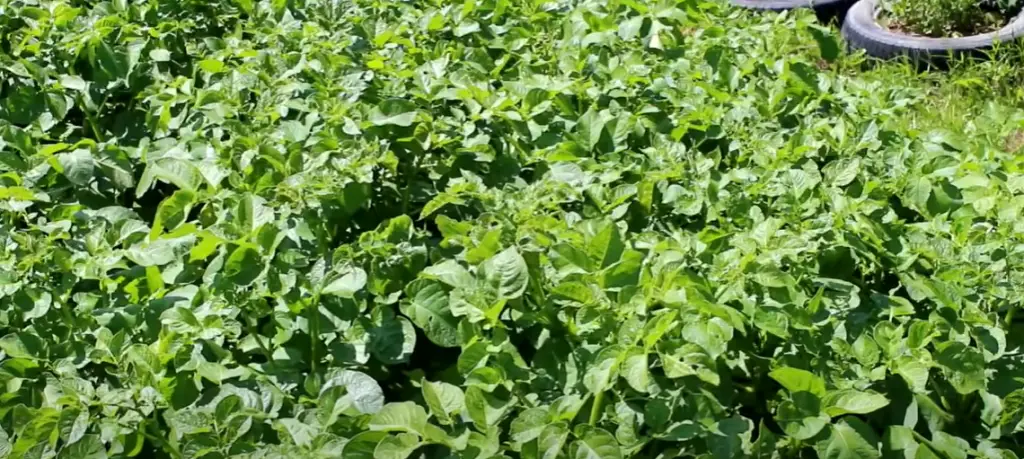
Watering and Fertilizing
Potatoes need consistent moisture throughout their growing season. Make sure to water your potatoes deeply and regularly, aiming for 1-2 inches per week. Using a fertilizer that is formulated specifically for potatoes will also give them an extra boost of nutrients.
Weed Control
Weeds can compete with your potato plants for resources such as light and water, so it’s important to keep the area free of weeds throughout the growing season. You can use a garden hoe or hand-pulling to remove the weeds and prevent them from taking over your potatoes.
Harvesting
When it comes time to harvest, wait until the foliage has died back completely before digging up your potatoes. Carefully dig up each potato plant with a spading fork and be sure to handle them gently. Lay the potatoes on newspaper in a cool, dark place for about 10 days before storing them.
Tuber Care
Once you’ve harvested your potatoes, it’s important to store them properly. Potatoes should be stored in a cool and dry area with plenty of ventilation. Check for any signs of rot or damage and discard any affected potatoes immediately. Make sure to keep the tubers away from exposure to sunlight to prevent them from turning green or producing toxins. With proper care, your potatoes will stay fresh and delicious for months. [4]

When Are Potatoes Ready to Harvest and How To Do It?
Potatoes are a versatile root vegetable that can be harvested in the summer and fall. Knowing when to harvest potatoes is essential for having quality potatoes that are ready to eat. Additionally, it’s important to know how to properly harvest potatoes so that you don’t damage the potato plants or the tubers themselves.
When it’s time to start harvesting potatoes, the key is to be gentle. Here is step-by-step instruction to help you harvest potatoes:
Step 1: Locate the Potatoes
The first step in harvesting potatoes is to locate them. Gently dig around and near the base of the plant with your hands or a shovel until you can find some tubers.
Step 2: Lift Carefully
Once you’ve located some potatoes, carefully lift them out of the ground using either your hands or a shovel. Be careful not to damage the tubers as you’re lifting them out of the ground.
Step 3: Gently Clean Off Excess Soil
Once you’ve removed the potatoes from the ground, gently clean off any excess soil or dirt that may be clinging to them. This can be done with your hands or with a small brush.
Step 4: Store in a Cool and Dry Place
Potatoes should be stored in a cool, dry place away from direct sunlight. This will help to ensure that the potatoes stay fresh until you’re ready to use them.
Harvesting potatoes is an important part of summer gardening and ensuring that your crop yields quality tubers for eating. Knowing when and how to harvest potatoes is essential for having the best yield possible, so make sure that you follow these steps. You’ll be well on your way to enjoying delicious potatoes! [5]
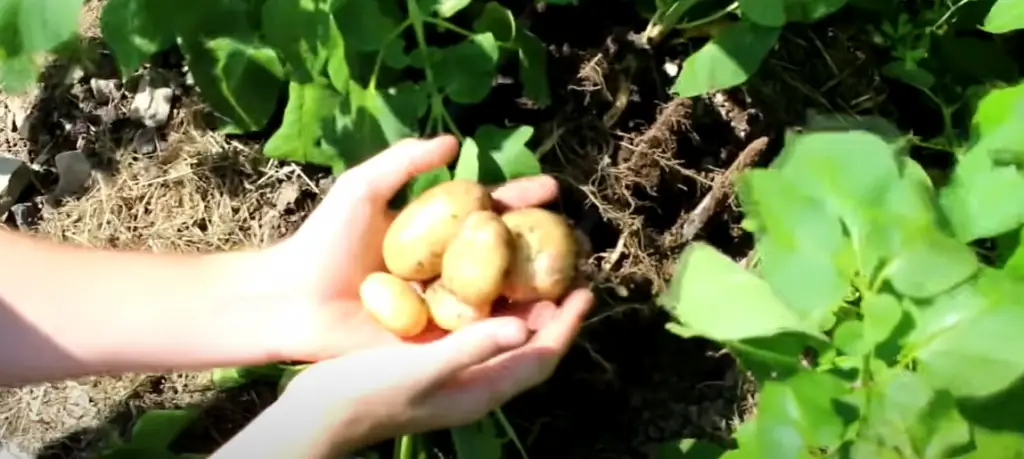
Is Potatoes Worth Fertilizing?
Fertilizing potatoes is beneficial for several reasons. They include:
Reason 1: Improved Plant Health
Fertilizing potatoes can help to improve the overall health of your plants. The nutrients found in fertilizers work to promote healthier and stronger roots and shoots, as well as increased yields. Additionally, providing the plant with essential minerals helps to ensure better quality produce that tastes better. [6]
Reason 2: Less Disease Damage
The extra nutrients that are added to potatoes with fertilizers help to reduce the damage caused by diseases. This is especially true of potato scab, which can cause unsightly blemishes and holes on the skin of your potatoes. By using a fertilizer specifically made for potatoes, you can help reduce possible disease damage without having to resort to more extreme measures.
Reason 3: Increased Nutrient Availability
Fertilizers provide your potatoes with the necessary nutrients they need to thrive. Without it, they may struggle in the garden and not produce the best yields. It’s important to note that different fertilizers are better suited for different soils, so you should always read the label and choose one that is specifically made for potatoes.
Reason 4: Longer Storage Life
By fertilizing your potatoes, you can also help them last longer during storage. This is because the nutrients found in fertilizers help to keep potatoes fresh for longer periods of time, reducing the possibility of spoilage or decay. As an added bonus, they can also help protect against pests that are attracted to potatoes. [7]
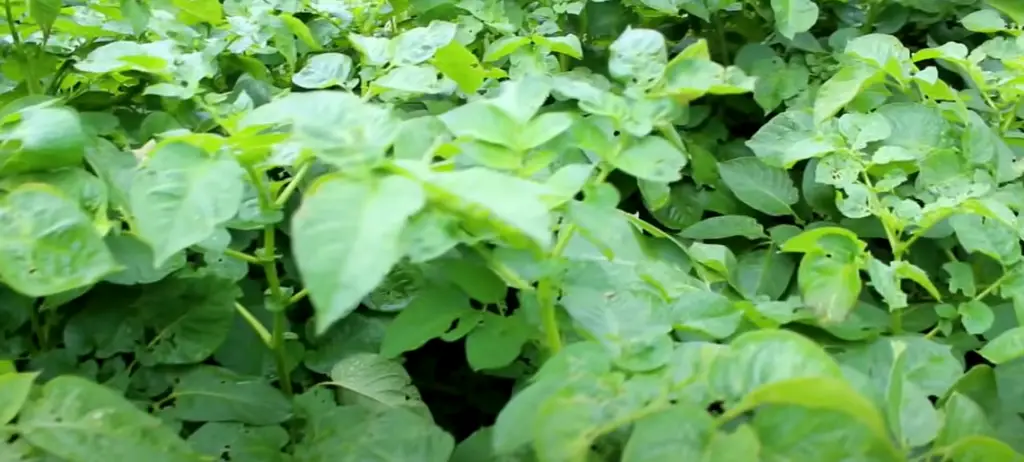
How to Fertilize Potatoes?
Potatoes are easy to grow if you know the right techniques. One of those techniques is fertilizing your plants. Here’s how to do it correctly:
- Start by testing your soil for pH levels and nutrient composition. Potatoes prefer a slightly acidic soil with a pH of 5.3-5.8. If the nitrogen, phosphorus and potassium levels are inadequate then you’ll need to make up this deficiency with fertilizer. [8]
- Choose the right type of fertilizer for potatoes. Look for a balanced fertilizer that is high in nitrogen, phosphorus and potassium. A 10-20-10 blend is a good choice for potatoes.
- Apply the fertilizer around your potato plants when they’re about 8 inches tall by spreading it evenly over the soil at a rate of 1/2 to 2 pounds per 100 square feet. Make sure not to apply it too close to the plants or else it can burn the foliage.
- Water your potatoes thoroughly after fertilizing them, as this will help to release the nutrients into the soil.
- Repeat this process every few weeks until harvest time. This will provide your potatoes with a steady supply of nutrients throughout their growing season. [9]
How to Store Potatoes?
Potatoes are an incredibly versatile and delicious staple in many diets around the world, but they can be challenging to store properly. If stored incorrectly, potatoes can become soft or rotten before you get a chance to cook them. Here are some tips on how to keep your potatoes fresh for longer:
- Keep potatoes away from sources of heat like ovens or radiators.
- Store potatoes in a cool, dark place with good air circulation.
- Check potatoes regularly for soft spots or rotten areas and remove them immediately if found.
- Never store potatoes in plastic bags as this can cause the potatoes to sweat and breed bacteria.
- Place your potatoes in a loose mesh bag or burlap sack. This allows air to circulate and keeps them from bruising.
- Try to use your potatoes within a few weeks of buying them for the freshest flavor.
- If you need to store your potatoes for longer, they can be refrigerated in an airtight container or sealed plastic bag. This will slow down their spoilage but may cause some discoloration. Be sure to cook them within a few days of refrigerating.
- Avoid letting your potatoes freeze as this can cause them to become mushy when cooked. [10]
What Diseases Can Potatoes Have?
Potatoes are susceptible to a wide range of diseases that can significantly reduce crop yields. Potato disease problems vary from year to year and from location to location, so it’s important to be aware of the most common potato diseases in order for farmers and home gardeners to take steps to prevent them. Some of the most common potato diseases include late blight, early blight, common scab and potato wart.
Late Bblight
Late blight is a serious disease caused by the fungus-like organism, Phytophthora infestans. It can cause extensive damage to tubers and foliage in just a few days. The symptoms of late blight include wilting leaves which turn brown or tan, small black spots on the stems and large dark lesions on the potato tubers.
Early Blight
Early blight is a fungal disease that is caused by Alternaria solani. It can infect a potato plant either through contact with soil or from other infected plants. Early blight results in dark spots on the leaves, stems and tubers of the potatoes. The foliage may also become yellow and wilt.
Common Scab
Common scab is a bacterial disease that affects the potato skin. It is caused by Streptomyces spp and it results in irregular, raised lesions on the surface of tubers. These lesions may be rough or even scaly in appearance.
Potato Wart
Potato wart is a fungal disease caused by Synchytrium endobioticum. It affects the tubers of potatoes, causing rough, wart-like growths to form on them. The warts may be yellowish or brown in color and can range in size from tiny bumps to large lumps. [11]
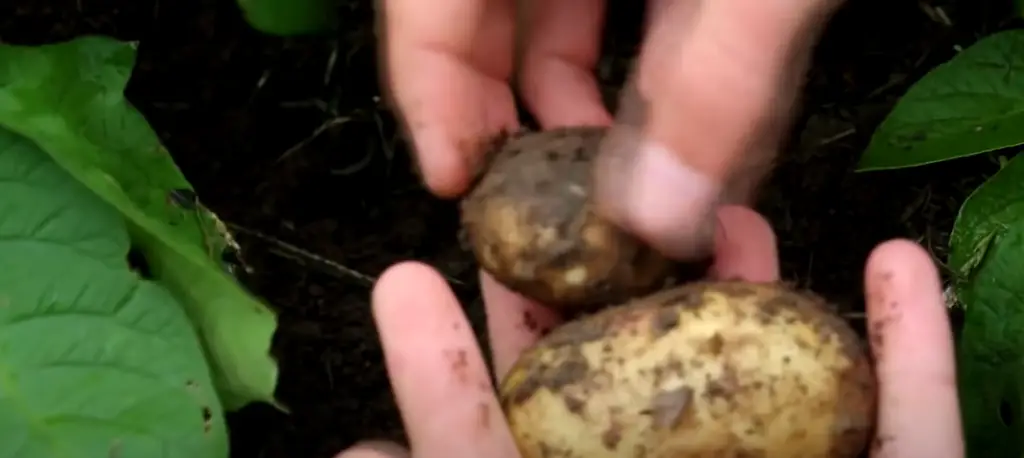
How to Cope with Potato Diseases?
Potatoes are a staple in many people’s diets, but they can also be susceptible to disease and pests. Let’s figure out how you can cope with the most common potato diseases.
- Look for signs of disease. Keep an eye out for wilting, yellow leaves, discoloration of the potato itself, or any other unusual markings. These are all indications that your potato could be infected with a disease.
- Know the most common diseases. Common diseases to watch out for include Early Blight, Potato Scab, and Late Blight. Each has its own causes and symptoms, so be sure to research them before attempting any treatments.
- Control the environment. Many potato diseases are caused by environmental conditions such as humidity levels, temperature, or soil composition. Make sure these factors are controlled in order to prevent disease outbreak.
- Try natural treatments first. Before using chemical treatments, try some natural remedies like adding compost or mulch to the soil. This will help keep potatoes healthy and give them an extra boost of nutrients
- Use chemical treatments with caution. Chemical treatments such as fungicides can be used to combat potato diseases, but these should be used sparingly in order to avoid any negative impacts on the environment. Be sure to read all labels carefully before use.
- Rotate your crops. Planting potatoes in the same spot year after year can lead to an accumulation of disease-causing organisms, so it is best to rotate them around and change up their location every season.
- Dispose of infected plants properly. If you have plants that show signs of disease, it’s important to dispose of them quickly and properly. Otherwise, you risk spreading the disease to other plants in the area.
- Practice preventative care. Take good care of your potatoes by keeping them watered and fertilized regularly, removing any diseased plants from the garden as soon as possible, and using natural treatments when necessary. This will help reduce your chances of encountering potato diseases in the first place. [12]
FAQs
Can you leave potatoes in the ground too long?
Yes, you can leave potatoes in the ground for too long. If the potatoes are left in the ground too long they will start to become woody and difficult to eat. Additionally, if potatoes are left in the ground for an extended period of time, they may start to rot or be attacked by pests and diseases. It is best to harvest your potatoes when they are ready and not leave them in the ground for too long.
Can you eat freshly dug potatoes?
Freshly dug potatoes can be delicious, but they must be prepared and cooked properly. Fresh potatoes often contain high levels of solanine, a toxic compound that can cause symptoms like nausea, vomiting, and paralysis if consumed in large quantities. To avoid any potential problems with solanine poisoning, it’s important to wash freshly dug potatoes thoroughly before cooking them. Additionally, the potatoes should be cooked thoroughly at temperatures above boiling to ensure that all solanine is destroyed. If you follow these steps, freshly dug potatoes can be a tasty and safe addition to your meals.
Should you throw out potatoes that grow roots?
No, you should not throw out potatoes that have grown roots. Roots are a sign that the potato is healthy and continues to receive nourishment from its environment. In fact, potatoes with root growth can actually be replanted in soil or water for further growth. To use these potatoes, make sure to remove any growths before cooking them so they don’t give off an unpleasant flavor. Additionally, it’s important to store potatoes away from light and moisture since both can cause them to rot. With the right care, you can still enjoy potatoes that have grown roots.
If you’re looking for other ways to use up potatoes that have started growing roots, there are a few options available. You can cut the potato into slices and fry them up for a tasty meal, or you can cube the potato and roast it with other vegetables. Potatoes are also popular ingredients in soups and stews, so consider adding them to your favorite recipes. Whatever you choose to do, potatoes that have grown roots can still be used in plenty of delicious dishes!
What happens to potatoes if you don’t harvest them?
If potatoes are not harvested, the plant will stop producing tubers to focus on seed production. Eventually, the plant will produce a large flower stalk which terminates in a collection of flowers. These flowers may eventually set fruit, but the potatoes themselves will become small and tough. Generally speaking, if left in the ground too long, potatoes will suffer from decreased yields and reduced eating quality. In some cases, the potatoes can be left in the ground for a few weeks after the plant has died and they will still remain edible. However, this is not recommended since it increases the risk of pests and diseases that could ruin the crop. Furthermore, leaving potatoes unharvested for too long also makes them vulnerable to frost damage which can render them unusable.
Harvesting potatoes in a timely manner is therefore important for the overall health and quality of the crop. If you want to get the best yields from your potato crop, it’s essential to harvest them as soon as they reach maturity.
Useful Video: When to Harvest Potatoes – Simplest Method!
Wrapping Up
In conclusion, potatoes are a nutritious and delicious addition to any meal. Knowing when they are ready to harvest can sometimes be a challenge, but understanding what the signs of readiness look like is key. Noticing folds and cracks in your potato plants leaves, checking for potato size, and examining the foliage can all give you an idea on when the time is right for harvesting. Furthermore, it’s vital to note that if the plant is too mature and left in the ground too long, the tubers may not store as well and are more prone to spoilage. As long as you remain attentive to your crop, you should have no problem mastering the art of harvesting potatoes!
References:
- https://www.allrecipes.com/article/is-potato-a-vegetable/
- https://mykitchen101en.com/is-potato-a-vegetable-or-not/
- https://www.hgtv.com/outdoors/flowers-and-plants/vegetables/how-to-plant-and-grow-potatoes
- https://www.almanac.com/plant/potatoes
- https://www.gardenary.com/blog/3-signs-your-potatoes-are-ready-for-harvest
- https://getmeteotrack.com/agro/en/blog/potatoes
- https://wikifarmer.com/potato-fertilizer-requirements/
- https://extension.umn.edu/crop-specific-needs/potato-fertilization-irrigated-soils
- https://www.homesandgardens.com/gardens/how-to-fertilize-potatoes
- https://www.southernliving.com/food/veggies/potatoes/how-to-store-potatoes
- https://potatoes.ahdb.org.uk/knowledge-library/potato-disease-identification
- https://www.growerexperts.com/how-to-cope-with-pests-and-diseases-in-organic-potatoes/





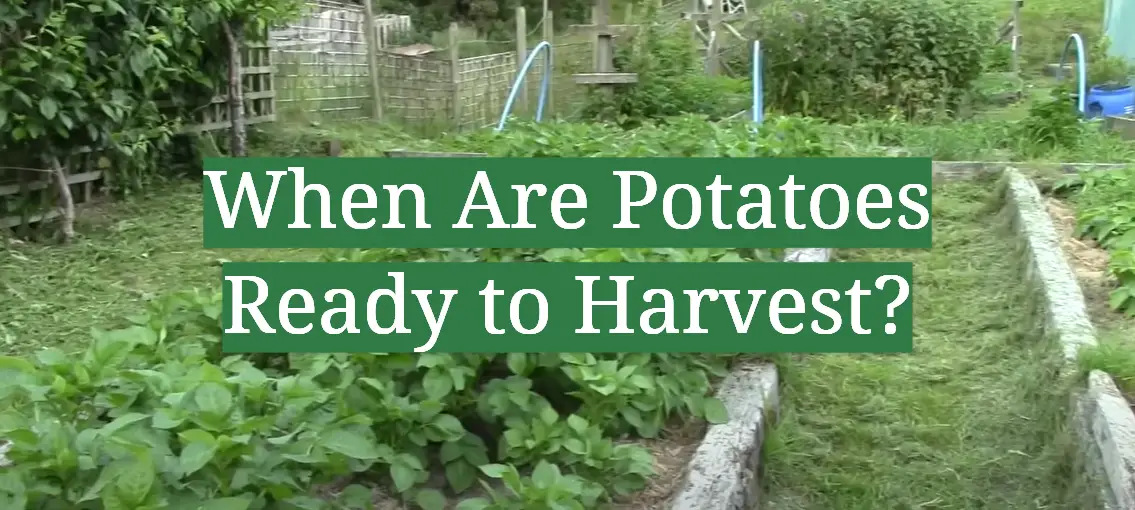




Leave a Reply
View Comments